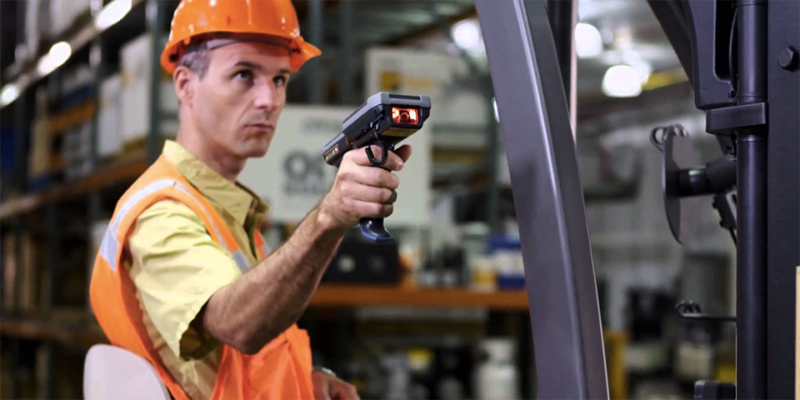TRIS Warehouse integrates computerised data from hand terminals, barcode readers, RFID, voicepicking, RF etc.
Using different types of terminal (handheld, forklift-mounted, etc.) data can be recorded automatically and sent via RF online and processed in real time in the database.
Data from inbound and put-away scanning are placed automatically in order of entry, while picking and outbound scanning is placed in exit order and replace and refill scanning become shift orders.
But the best is still to come: the web-based scanning application developed by Intris ensures that whatever device is used for scanning (handheld, tablet, smartphone etc.) the device itself does not have to be programmed, and moreover the user always has the latest version available.
The scanning program can interpret the various types of barcodes (including QR codes) and even generate labels with customer-specific barcodes.
The operations that apply (checking, grouping, partial packing etc.) are defined for each project.
How it works
The user logs in and specifies what it is they want to do: inbound, outbound, shift, inventory … or whatever.
If it is an inbound consignment, they scan the barcode of the order and see on the screen that it concerns e.g. five containers that have to be unloaded.
By selecting a first container they obtain a list of the pallets that have to be unloaded in the container, the make-up of the pallets and the location of the goods that have to be palletised.
The scanned goods are then compared each time with the order until the job has been completed.
If it is an outbound consignment, then the user obtains a list of the pallets that have to be loaded. A counter records the progress of the loading process.
While the load order is being scanned, the system allows the user to scan other pallets that are not earmarked for loading, as long as certain characteristics of the loading pallets are met.
This avoids unnecessary shift operations.
If it is a replacement (shifting pallets to make optimum use of the warehouse space), then the storeman scans the pallet at its new and its old location, so that the latter is correctly recorded in the database.
If it is a stock-taking, then the user scans the pallet and the location; the system checks this against the database and updates automatically.
Additional options
The scanning software also enables damage to be recorded.
The system also checks whether the user is permitted to make certain deviations (for example: if five identical items have to be picked from a pallet, then the order in which they are picked does not matter).
The scanning software furthermore offers an “article info” option that gives the user detailed information about a particular pallet: container numbers, product description, origin, destination etc.
All scanning operations are logged so that afterwards it is possible to find out who scanned what and to generate a report.

